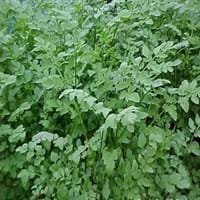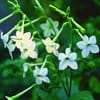Life Span
Perennial
Annual
Type
Tender Perennial
Grass
Origin
Southern Asia, Southeastern Asia, India, China, Japan, Australia
Hybrid origin, Europe
Types
Not Available
Not Available
Habitat
Bog Garden, Cultivated Beds, Ponds
Farms
USDA Hardiness Zone
9-11
Not Available
AHS Heat Zone
Not Available
10 - 1
Sunset Zone
H1, 9, 14, 15, 16, 17, 18, 19, 20, 21, 22, 23, 24
1a, 1b, 2a, 2b, 3a, 3b, 4, 5, 6, 7, 8, 9, 14, 15, 16, 17, 18, 19, 20, 21, 22, 23, 24
Habit
Spreading
Clump-Forming
Flower Color
White
Green, Light Green
Flower Color Modifier
Bicolor
Bicolor
Fruit Color
Not Available
Not Available
Leaf Color in Spring
Green
Light Green, Gray Green
Leaf Color in Summer
Green
Light Green
Leaf Color in Fall
Green
Light Green, Yellow green, Gold
Leaf Color in Winter
Light Green
Not Available
Leaf Shape
simple-pinnate or double-pinnate
Linear
Plant Season
Summer, Fall
Not Available
Sunlight
Full Sun, Partial Sun, Partial shade
Full Sun
Type of Soil
Clay, Loam, Sand
Loam
The pH of Soil
Acidic, Neutral, Alkaline
Neutral
Soil Drainage
Poorly Drained
Well drained
Bloom Time
Late Summer, Early Fall
Late Spring, Early Summer
Tolerances
Drought
Not Available
Where to Plant?
Ground
Ground
How to Plant?
Divison, Layering, Seedlings, stem tip cuttings
Seedlings
Plant Maintenance
Medium
Medium
Watering Requirements
Needs Very high moisture
Requires a lot of watering, Requires watering in the growing season
In Summer
Lots of watering
Lots of watering
In Spring
Moderate
Moderate
In Winter
Average Water
Average Water
Soil pH
Acidic, Neutral, Alkaline
Neutral
Soil Type
Clay, Loam, Sand
Loam
Soil Drainage Capacity
Poorly Drained
Well drained
Sun Exposure
Full Sun, Partial Sun, Partial shade
Full Sun
Pruning
Remove dead leaves
Remove damaged leaves, Remove dead branches, Remove dead leaves
Fertilizers
Apply 10-10-10 amount
All-Purpose Liquid Fertilizer
Pests and Diseases
Aphids, Armyworm, Bacterial Blight, Damping off, Downy mildew
Red blotch
Plant Tolerance
Drought
Drought
Flowers
Showy
Insignificant
Flower Petal Number
Single
Single
Fragrant Flower
Not Available
No
Fragrant Leaf
Not Available
No
Fragrant Bark/Stem
Not Available
No
Foliage Texture
Fine
Fine
Foliage Sheen
Matte
Glossy
Attracts
Bees, Flies, Insects
Not Available
Allergy
no allergic reactions
no allergic reactions
Aesthetic Uses
Bog Garden, Ground Cover
Not Used For Aesthetic Purpose
Beauty Benefits
Not Available
Not Available
Environmental Uses
Air purification
Air purification
Medicinal Uses
Depurative, Febrifuge, Styptic
Menstrual Disorders, osteoporosis, Urinary tract problems
Part of Plant Used
Leaves, Root, Seeds
Whole plant
Other Uses
Used as a seasoning in soups, useful as a ground cover
Culinary use, Used for pasture
Used As Indoor Plant
No
No
Used As Outdoor Plant
Yes
Yes
Garden Design
Container, Edible, Groundcover, Herb / Vegetable, Water Gardens
Edible
Botanical Name
OENANTHE javanica
AVENA sativa
Common Name
Java Water Dropwort, Water Celery, Water Parsley
Oat
In German
Wasser Sellerie
Haferpflanze
In French
Céleri d'eau
Plantes d'avoine
In Spanish
El apio agua
planta de avena
In Greek
Σέλινο νερό
φυτό βρώμη
In Portuguese
Aipo água
aveia planta
In Polish
Seler Woda
Owies roślin
In Latin
Aqua Apium
Oat plant
Phylum
Magnoliophyta
Tracheophyta
Class
Magnoliopsida
Liliopsida
Clade
Angiosperms, Asterids, Eudicots
Angiosperms, Commelinids, Monocots
Subfamily
Apioideae
Pooideae
Number of Species
Not Available
Season and Care of Water Celery and Oat plant
Season and care of Water Celery and Oat plant is important to know. While considering everything about Water Celery and Oat plant Care, growing season is an essential factor. Water Celery season is Summer and Fall and Oat plant season is Summer and Fall. The type of soil for Water Celery is Clay, Loam, Sand and for Oat plant is Loam while the PH of soil for Water Celery is Acidic, Neutral, Alkaline and for Oat plant is Neutral.
Water Celery and Oat plant Physical Information
Water Celery and Oat plant physical information is very important for comparison. Water Celery height is 20.30 cm and width 60.00 cm whereas Oat plant height is 60.00 cm and width 10.20 cm. The color specification of Water Celery and Oat plant are as follows:
Water Celery flower color: White
Water Celery leaf color: Green
Oat plant flower color: Green, Light Green
- Oat plant leaf color: Light Green and Gray Green
Care of Water Celery and Oat plant
Care of Water Celery and Oat plant include pruning, fertilizers, watering etc. Water Celery pruning is done Remove dead leaves and Oat plant pruning is done Remove damaged leaves, Remove dead branches and Remove dead leaves. In summer Water Celery needs Lots of watering and in winter, it needs Average Water. Whereas, in summer Oat plant needs Lots of watering and in winter, it needs Average Water.





